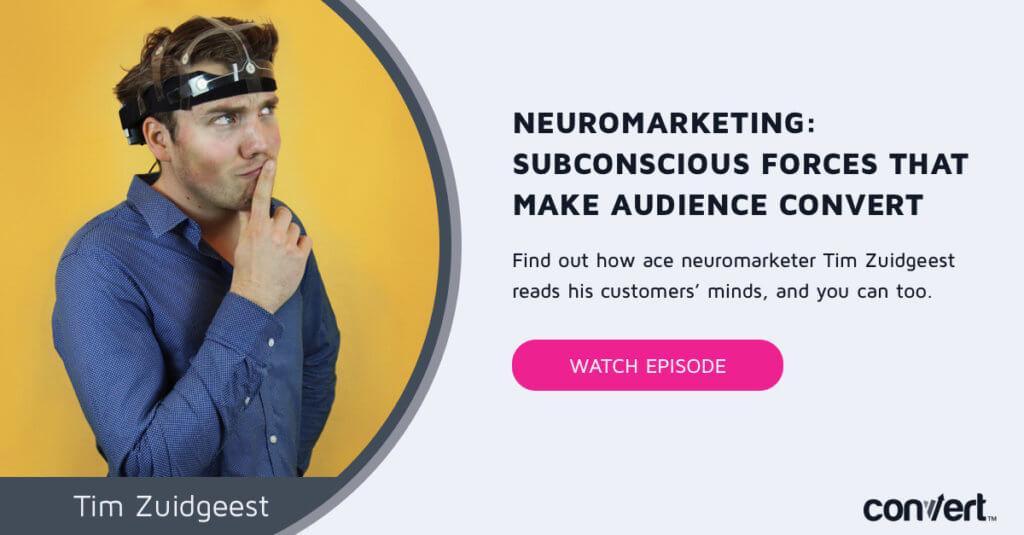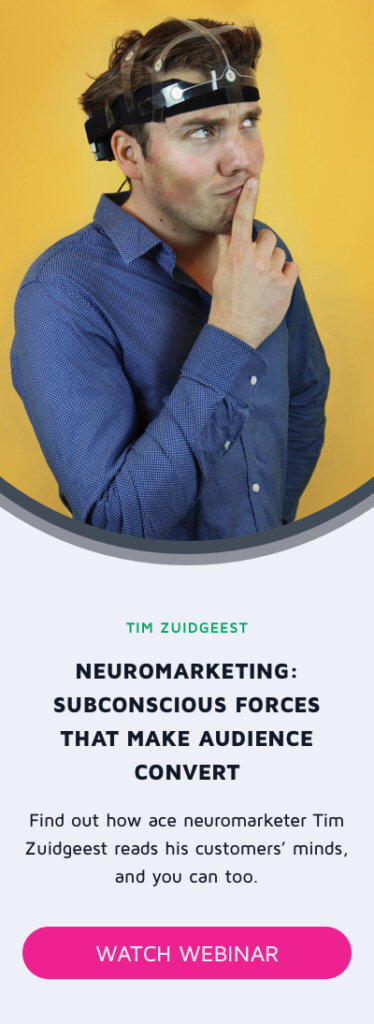How to Optimize CRO Strategies with Sentiment Analysis
Not too much time has passed since AI-based sentiment analysis entered the CRO stage. However, not everybody heard the news. In fact, only 21% of companies have plugged their businesses into AI, according to a McKinsey report.
Any innovation comes with tons of opportunities. There’s a lot of empty blanks businesses can take as opportunities to launch their own innovative and radical CRO strategies.
In this post, we’ll uncover the fusion between traditional CRO and the latest MarTech solutions and its potential for eCommerce.

What is Sentiment Analysis?
Sentiment analysis relies on AI and machine learning to extract subjective data in the form of social media comments or customer reviews and structure them into negative, positive or neutral stances.
What’s groundbreaking about it is that sentiment processing happens automatically.
Also known as opinion mining, this new MarTech direction is to investigate the subjective side of the success/failure binary. For example, let’s say that a massive wave of organic traffic hits your eCommerce website. What activates your analytical mind is the unknown source that triggered such an unusually high number of new leads.
Big data shows you that most of the new site visitors come from social media. Sentiment analysis adds flavor and nuances to reveal the whole story behind this event. The AI algorithms are intercepting message threads with stellar positive sentiments. The entire exchange of lines revolves around an influencer’s post recommending your brand.
That’s one sentiment analysis example that underlines the new depths of perception marketers can unlock.
Armed with a brand new set of cognitive data, A/B testers can tweak their strategies, design, and copy to better interact with site visitors.
How AI Processes Sentiments
We all know that bots are not the experts we turn to for a heart-to-heart conversation. So how is automatic sentiment analysis even possible within the AI realm?
Polarity
So far, the bots that fill in a sentiment analysis report are self-educating through deep learning to identify main concepts in text, faces, and colors.
Tweets, product reviews, selfies, Facebook posts, blogs, surveys, forums, and anything else that encapsulates consumers’ words and moods are under AI’s radar.
One of the basic types of sentiment analysis comprises a polarity check. Each individual word or expression receives its own label as either positive(+1) or negative(-1). So far, the concept is straightforward. As long as the indicator tilts towards the positive side, brands are excelling at inspiring consumers. A/B tests can follow to determine exactly the elements that make people happy so that businesses can fortify and bring them forward.
Some programs are going the extra mile to determine neutral identifiers. A “play it safe” strategy might get the “neutral” marker in a concerningly high percentage. Consumers’ indifferent attitude towards a brand can reveal the absence of a memorable message. When in the grey area, the time has come to abandon the cozy, safe space and start rolling experiments on end.
Underlying Feelings

Now that each element of a sentence found out where it belongs in the polarity register, AI takes it up a notch. The next step is to identify the actors’ intent. Consumers’ underlying motives for choosing certain words can spring from this sentiment spectrum:
- Happy;
- Calm;
- Sad;
- Angry;
- Confused;
- Surprised;
- Disgusted.
Object of Interest
Luckily, producers don’t have to change the product altogether to address dissatisfied clients. Sentiment analysis can identify what made customers angry, fearful, sad, surprised, happy or disgusted.
In this case, AI examines words and their meanings to identify what made customers to write down their thoughts. All those features conspicuous enough to make or break a deal are questioned. At this point, companies will know which aspects to improve and which features to highlight in their campaigns.
The packaging was sloppy, but these jeans are actually great.
In this example, there’s a clear marker that the brand is one unboxing experience away from a 100% satisfied customer. The object of interest that stimulated the client review is obviously the parcel arrangement. It needs a touch of style.
Top Sentiment Analysis Applications for CRO
Businesses are rushing towards this novel AI technology. So far, they’ve found various applications for it.
Over the last few years, they have been busy improving their relationship with clients, streamlining eCommerce strategies, amplifying brand awareness, avoiding PR disasters, etc.
All these areas of improvement have become visible under the AI lenses and helped to fortify the CRO efforts.
Social Media Listening
Let’s face it, social media channels have become extensions of eCommerce platforms. Once businesses dedicate resources for a new social profile, consistency and content quality help to keep up with a cost-effective, interactive yet sensitive channel.
That’s right, social media is a double-edged sword. Such mediums can build shiny reputations overnight but also shatter them just as easily. This is why social media strategies need sentiment analysis as well before being judged in front of the entire community.
Facebook, YouTube, Instagram, LinkedIn, and Twitter are effective means through which brands connect with their target audience. Social media sentiment analysis ensures brands understand their public and act accordingly.
Here are some of the protocols social media sentiment can unroll:
- Use face recognition technology to identify expressions in photos: happy, calm, sad, angry, confused, surprised, disgusted. Fuel the newsfeed with more visuals that sway viewers’ mood at one glance;
- Use text analysis to identify feelings suggested in captions, replies, and private messages: joy, sadness, disgust, anger, fear;
- Automatically analyze brand mentions across several social media channels and label them.
A predominantly happy social community will stimulate larger waves of traffic for your website. Once this happens, the on-site CRO strategies will be ready to guide visitors down the sales funnel until the point where they become clients.
Market Research
Sentiment analysis shows you which way the market is going. This way, companies can modernize their products to keep them relevant to modern shoppers.
Since consumers decide the market direction, yet they are irrational shoppers, their arguments are based on feelings. That’s a field sentiment analysis is an expert in. At this point, AI can fortify the following factors:
- Product reviews: Quick text scans with a focus
on intent can identify how consumers are feeling about features. Have they
become obsolete? Or have they gained momentum? Based on the elements users are
talking about the most, marketers can do the right adjustments. - Industry reports: Recurrent industry reports
are essential to a robust database. Price fluctuations, product innovations,
the next market direction are instrumental insights without which CRO
strategies lack accuracy. A subjective lense added to this mix can offer a
better vision of the status quo. - Market and competitor comparisons: How
consumers are feeling about a market niche in a country can differ from that of
others. Likewise, competitors’ customers may activate a different set of
impressions regarding a product. Now market research can encompass comparisons
that study fluctuations in the sentimental fabric of consumers. - Press monitoring: Any sharp change in the tone
of the press will appear on sentiment analysis’ radar. These markers in the
media sector are a call-to-action for businesses to seize the momentum and act
on it to get maximum results with minimum effort.
Landing Pages
Based on subjective insights, conversion rates can see staggering reformations on landing pages. The AI revolution created new metrics businesses can add to their reports for a 360-degree view of their eCommerce websites:
- Image recognition – AI can analyze patterns inside pictures. Based on clients’ purchase history, businesses can engage in upselling by populating landing pages with similar products.
- Visual sentiment analysis – AI is evolving to classify the range of sentiments each visual stimulus can produce. Decisions regarding landing page designs can consult the stimuli index and select those elements that bring site visitors in the right state of mind.
- Predictions – Making estimations of what the future holds is as hard as identifying people’s reactions online. Starting from an archive of registered behavioral patterns, AI can customize landing pages to a visitor’s preferences. Products are changing as a natural evolution of a visitor’s previous experience. Predictions are more than similar recommendations – they are users’ current needs.
- Semantic search – The search bar is an overlooked visitor-site communication channel. The words typed in these boxes reveal one precious insight: consumers’ intent. Sentiment analysis based on language processing and machine learning can turn this into actionable suggestions for landing page optimizations. As a result, the landing page will serve visitors with exactly the kind of products they are looking for.
Product Pages
Sentiment analysis will also play a vital role in optimizing product pages in the foreseeable future. We all know that a fluid sales funnel depends on how persuasive these pages are.
All the efforts put in optimizing social media profiles, online campaigns, and landing pages have led leads up to this point. It is now up to product details, design, product images, text, customer reviews, and add-to-cart buttons to prove their conversion power. At this point, visitors are interested in the product. How do you turn them into customers?
Sentiment analysis can make the answer to this question easier. Subjective data improves these aspects:
- Copywriting – The holy grail of marketing is
that ideal word selection that makes consumers click. Industry behemoths are
already investing in bots that know how to write to
reach different goals. Following this path, product pages will thrive without
copywriting talent. All they need is a tiny fraction of the vocabulary, but one
that bears stellar sentiment charge. Any combination of these power words that
also makes sense is enough to ensure success. - Visual sentiment analysis – Studio photography
will always reveal the tiniest details in a product. Since they are such good
storytellers, product images should also include props for context. Sentiment
analysis helps marketers decide on the right lifestyle frames by identifying
the feelings they transmit. - Color schemes – Colors are also shaping states
of mind. Therefore, color psychology helps product page
optimization tremendously. Sentiment analysis can identify color percentages
(are you using too much purple or too little?) and interpret color
combinations.
Get Ready for the Future
Where will all these innovations in technology lead eventually? Ideally, the eCommerce of the future resembles a fluid ecosystem with a mind of its own.
Each website will appear as a unique landing page before the eyes of visitors. However, the elbow grease will happen in the few seconds the page is loading. Once the user gives the command to open the shop, algorithms and bots will unroll a new analysis based on their profile. Interpretations and recommendations will materialize into a fully customized landing page.
Sentiment analysis applications will be a large part of the next eCommerce version. Its role will be to process and interpret subjective data to make the visitor’s stay as pleasant as possible. Is your eCommerce optimized for the future?
Found this post useful?
Supercharge your conversion strategy with this webinar from our Academy.
Written By
Oana Alexandrov



